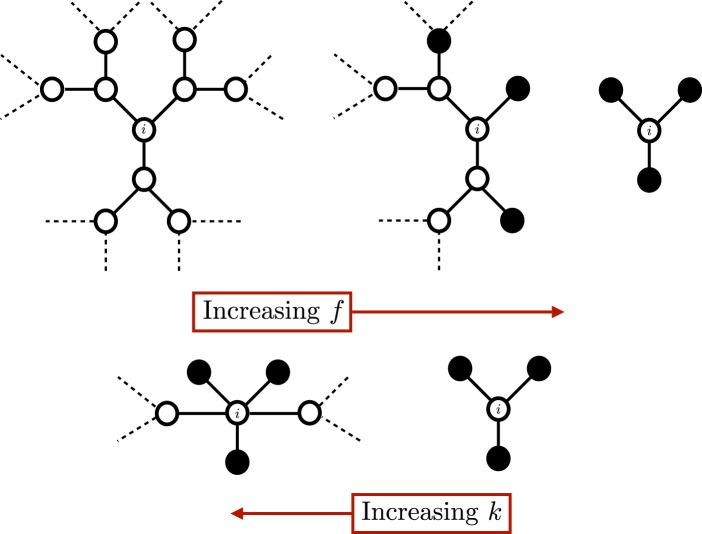Figure 5.
For illustration of the bias-connectivity trade-off, consider a Cayley -tree structure and let . When , each unbiased node has 3 independent sources of novel information, one from each branch associated with a neighbor. As increases, unbiased neighbors are steadily replaced with biased agents that act as gatekeepers and restrict the flow of novel information from their branches, resulting in an equivalence with fewer branches overall. Increasing social connectivity bypasses biased neighbors and enables the discovery of novel information. This can also be interpreted as agents being encased in “echo chambers” as bias grows, and circumventing these chambers as connectivity increases.

